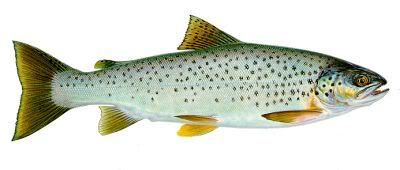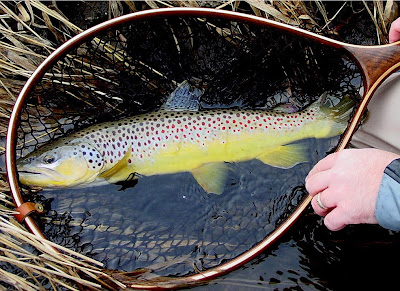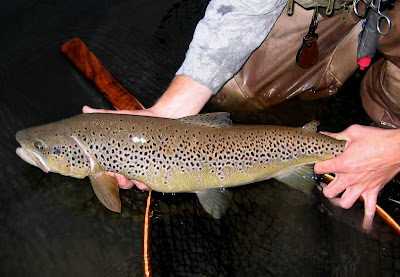A Loch Leven fish
Loch Leven Brown Trout
Salmo trutta trutta
The brown trout of Loch Leven is considered by many anglers to be the 'perfect' trout, both for its graceful form and its sporting qualities.
Specimen study/watercolour
Following the retreat of the ice sheets from northern Britain some10,000 years ago, a massive block of ice was left stranded just north of the Firth of Forth in what is now southeast Scotland. As the climate slowly warmed, the ice melted, and its water cut a river into the Forth at Largo Bay. The lake that now fills the depression made by this gigantic block of ice has become the most famous trout water in the world: Loch Leven.
Since the middle of the 19th century, the Loch Leven strain of brown trout has been transported to many regions that were formerly far beyond the range of any trout species: Argentina, the Indian subcontinent, the Falkland Islands, Australia and New Zealand. In North America it now lives alongside the native rainbow and cutthroat trout. And in fisheries throughout Europe, trout farmers take pride in the knowledge that their brown trout originate from the Loch Leven strain.
Presumably Loch Leven was colonised soon after the ice melted, by trout from the sea running through the Forth and the River Leven. Over thousands of years the trout population became specially adapted to life in the loch. They acquired a coloration that presumably camouflages them from predators better than any other. They became adapted to feeding on the invertebrates with which the loch abounds, especially crustaceans such as the freshwater shrimp and planktonic Daphnia, which are rich incarotenolds and produce the appetising redness of the trout flesh.
A freshly-caught Loch Leven trout can quite easily be distinguished from trout caught elsewhere. Early scientists considered it a separate species. Before Dr Gunter and the Reverend Houghton referred to the Loch Leven trout as Salmo levenensis, a Dr Parnell named it Salmo caecifer because of the large number of 'caecae' or appendices that it had in its gut system.
However, when stocks of Loch Leven trout are taken and introduced into other waters they lose some of the characteristics that they have in their natlve loch. They interbreed freely with any other brown trout in the water, and very quickly become almost indistinguishable from the trout native in the lake or river. Even in fish farms where the strain is kept isolated from others, some of the Loch Leven characteristics can soon be lost; especially the colour. So to see a Loch Leven trout at its best there is no choice: you have to go to Loch Leven.






 Reply With Quote
Reply With Quote
